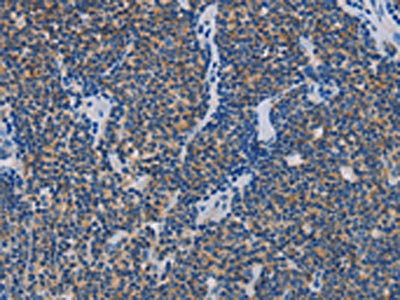
The image on the left is immunohistochemistry of paraffin-embedded Human lymphoma tissue using CSB-PA163788(AMBRA1 Antibody) at dilution 1/25, on the right is treated with fusion protein. (Original magnification: x200)
AMBRA1 Antibody
CSB-PA163788
ApplicationsELISA, ImmunoHistoChemistry
Product group Antibodies
ReactivityHuman, Mouse
TargetAMBRA1
Overview
- SupplierCusabio
- Product NameAMBRA1 Antibody
- Delivery Days Customer20
- ApplicationsELISA, ImmunoHistoChemistry
- CertificationResearch Use Only
- ClonalityPolyclonal
- ConjugateUnconjugated
- Gene ID55626
- Target nameAMBRA1
- Target descriptionautophagy and beclin 1 regulator 1
- Target synonymsDCAF3, WDR94, activating molecule in BECN1-regulated autophagy protein 1, DDB1 and CUL4 associated factor 3, WD repeat domain 94, activating molecule in beclin-1-regulated autophagy, autophagy/beclin-1 regulator 1
- HostRabbit
- IsotypeIgG
- Protein IDQ9C0C7
- Protein NameActivating molecule in BECN1-regulated autophagy protein 1
- Scientific DescriptionHuman AMBRA1, which encodes a deduced 1,269-amino acid protein. Ambra1 was expressed throughout development in mice, with strong staining in the neuroepithelium. Regulates autophagy and development of the nervous system. Involved in autophagy in controlling protein turnover during neuronal development, and in regulating normal cell survival and proliferation. Interacts with BECN1. Probably forms a complex with BECN1 and PIK3C3.
- ReactivityHuman, Mouse
- Storage Instruction-20°C or -80°C
- UNSPSC41116161





